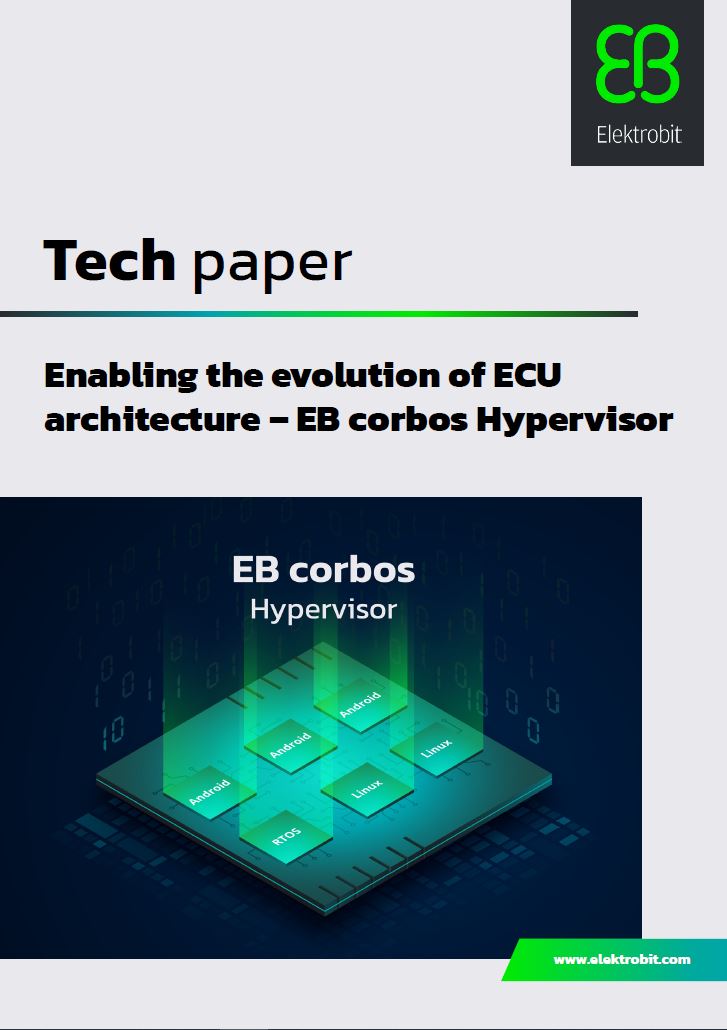
Table of contents
1. Introduction
2. Consolidation is driving evolution of system architecture
3. Impact on OEMs and vehicle domains: a revolution!
4. Impact on the software architecture: pressure to harmonize diverse requirements
5. Virtualization: powerful tool plays expanding role
6. EB corbos Hypervisor brings unique safety and security features
- Requirement 1: Transparent hardware abstraction
- Requirement 2: Pre-configured environments
- Requirement 3: Prioritized startup
- Requirement 4: Partitioning of the Middleware Layer
- Requirement 5: Safe execution environment
- Requirement 6: Secure execution environment
- Requirement 7: Support for independent system development lifecycles
7. Conclusion
Introduction
ECU architecture for automotive vehicle domains is currently evolving. This is partially driven by the potential cost savings made possible by consolidating ECUs, but more significantly by new capabilities that vehicle functions must provide to be competitive in the future automotive market.
In this paper, we will discuss how ECU architecture is changing, assess the impact of this changed environment and then dive into emerging requirements for the software architecture that result from these changes. Finally,we will show how EB corbos Hypervisor enables these future ECU architectures.
In this paper, we will discuss how ECU architecture is changing, assess the impact of this changed environment and then dive into emerging requirements for the software architecture that result from these changes. Finally,we will show how EB corbos Hypervisor enables these future ECU architectures.
Resource type
Tech paper
Related content
Click on the button to load the content from Pardot.



